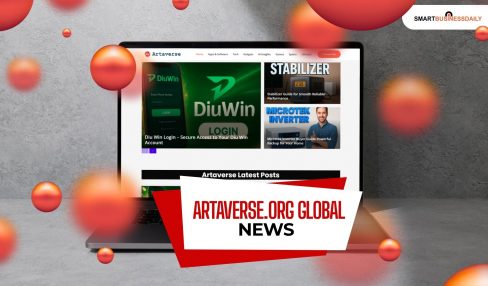Understanding The Hidden Reasons Behind Cart Abandonment In An Online Retail Business In 2025
30 May 2025
5 Mins Read

Cat abandonment is one of the biggest challenges faced by online stores. It is likely one of the biggest challenges that online retail stores face daily. This is largely due to the habit of window shopping, where people scroll through online stores more like social media platforms than traditional stores.
This departure from what an online retail store entails is due to the readily available nature of online stores and a general lack of consequences. It doesn’t make much of a difference if you scroll for about an hour before bed and add items to your cart.
But what most eCommerce brands fail to grasp is why it happens, and more importantly, what they can do to prevent it. Understanding the psychology and behavior of online shoppers is crucial if you want to recapture lost revenue and enhance your conversion rates.
The Psychology Behind Cart Abandonment

Even though cart abandonment is a natural phenomenon that we are all guilty of. However, understanding the psychology behind this issue is very important to pinpoint the hidden reason behind cart abandonment:
- Hidden costs sometimes break the deal and make it difficult or put people off when closing an online deal.
- Limited payment options or rigid payment can also put people off, as nobody wants to make a payment 15 times and not get it right.
- A lack of authority and trust is another factor that can push people over the edge.
- Excessive ping or slow internet speeds can make people impatient and prompt them to switch to other websites.
Even though every human being is different. These are the most frequently reported pointers. Therefore, understanding these points is very important to begin with.
It’s Not Just About Price or Shipping
Indeed, unexpected shipping costs and lengthy checkout forms are significant drivers of abandonment. But they’re not the whole story.
Sometimes, users leave their cart simply because something in the user experience felt off. The site was slow. The navigation was confusing. The CTA button wasn’t prominent. Or maybe they got distracted mid-checkout and didn’t feel any urgency to come back.
You won’t find these reasons in your analytics dashboard. But they’re costing you sales every single day.
Friction Kills Intent
A customer who adds products to their cart is showing intent—they’re already partway down the purchase funnel. That makes abandonment even more frustrating. But friction at this stage is what derails that momentum.
Here are a few examples of where things go wrong:
- Form Overload: Excessive fields, confusing dropdowns, or unclear validation errors can deter shoppers.
- Slow Load Times: A laggy experience, especially on mobile, can cause impatience and result in a bounce.
- Unclear Progress: If customers don’t know how many steps remain in the checkout process, they’re more likely to drop off.
- Unexpected Disruptions: Pop-ups, coupon fields, or modal windows that distract rather than assist.
Each of these adds “micro-friction” that chips away at purchase intent.
Why Traditional Analytics Doesn’t Tell the Full Story
Most eCommerce managers rely on analytics tools like Google Analytics to identify drop-off points. These tools are great for showing when users abandon the funnel, but not why.
For example, your data may indicate that 40% of users abandon the process at the payment step. Was it due to confusion, poor layout, or something else? Without visual data, you’re left guessing.
That’s where behavioral insight comes in.
Using Visual Behavior Data to Pinpoint Friction
This is where a website heatmap tool plays a critical role. Unlike analytics platforms that focus on numbers, heatmaps show you where users click, scroll, and spend their attention.
You might discover that:
- Users are clicking on static images expecting them to be interactive
- Shoppers aren’t seeing your “Continue to Payment” button because it’s too low on the page
- Mobile users are rage-clicking on a collapsible menu that isn’t responsive
With this level of insight, you can make targeted changes that actually reduce abandonment, rather than just guessing what to fix.
Using a website heatmap tool, especially in combination with session replays, helps you uncover silent UX killers that numbers alone can’t reveal.
Don’t Ignore the Intent Signals
Sometimes, cart abandonment isn’t final—it’s hesitation. Users might have second thoughts, want to compare prices, or are waiting for a better deal. That doesn’t mean they’re gone forever.
If your heatmaps and user recordings show that shoppers are spending time hovering over discount fields or opening return policy modals, those are signs of lingering uncertainty. This is your opportunity to act.
Consider these tactics:
- Exit-intent popups with an incentive to complete the purchase
- Email reminders with personalized product recommendations or urgency triggers
- On-site messaging that reinforces free returns, secure checkout, or fast shipping
By addressing hesitation directly, you keep the conversation going even after the user leaves.
Mobile Users Need Special Attention
Cart abandonment is worse on mobile than desktop—and it’s not just due to screen size. Mobile users are often multitasking, more impatient, and experience more technical hiccups.
Your heatmaps may reveal that:
- Buttons are too close together, causing misclicks
- Key steps are hidden behind dropdowns that don’t open reliably
- Page elements jump around as content loads
Optimizing your checkout for mobile is essential, not optional. The best way to do this is by observing how real users interact with your site on various devices.
Turn Insights Into Wins
Once you’ve identified patterns of friction and behavior, you can make small but high-impact changes. These might include:
- Shortening the checkout form or adding autofill
- Making the final CTA button sticky on mobile
- Offering guest checkout without requiring account creation
- Highlighting your return and shipping policies earlier in the process
These changes don’t just improve the user experience—they give users confidence. And confidence at checkout is often the difference between a completed purchase and an abandoned cart.
Final Thought
Cart abandonment isn’t just a pricing issue or a shipping problem—it’s often a user experience problem. The good news? These problems can be resolved once you start examining the behavior behind the bounce.
Your shoppers are telling you everything you need to know—you just have to watch more closely.



















Comments Are Closed For This Article